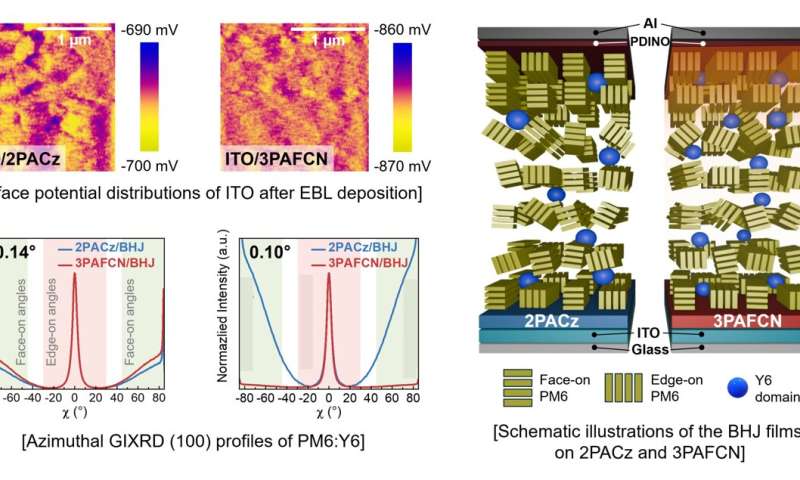Technologies enabling safe visual recognition in low-visibility environments are gaining increasing attention across sectors such as autonomous driving, aviation, and smart transportation. Thick fog remains a major challenge on highways, mountainous roads, and airport runways, where vision-based recognition systems frequently fail.
Traditional visible light cameras, LiDAR, and thermal infrared (IR) sensors experience a sharp drop in signal-to-noise ratio (SNR) under scattering conditions, making object and pedestrian detection unreliable. To overcome these challenges, researchers are seeking near-infrared (NIR) sensors that can operate stably and with low noise in real-world conditions.
A research team led by Dr. Min-Chul Park at the Center for Quantum Technology, in collaboration with Prof. Jae Won Shim at Korea University and Profs. Jea Woong Jo and Sae Youn Lee at Dongguk University has developed a high-sensitivity organic photodetector (OPD) that maintains ultra-low noise performance even in light-scattering environments.
The study is published in the journal Advanced Materials.
The team successfully reconstructed transmission images in simulated fog and smoke conditions and quantitatively verified the sensor’s performance.
The study is notable as it presents the first experimental demonstration of a hardware-based visibility enhancement system in realistic fog-like environments—following the team’s earlier development of an AI-based software fog removal technology that received a CES 2025 Innovation Award.
Based on this achievement, the team is advancing a software-hardware integrated solution for visibility enhancement, targeting applications in autonomous driving, smart transportation infrastructure, and drone-based surveillance.
-

Schematic illustration comparing the surface and molecular orientation characteristics of 3PAFCN with those of conventional 2PACz, highlighting differences in interfacial charge behavior. Credit: Korea Institute of Science and Technology (KIST)
-

Experimental setup and results from fog simulation tests. The 3PAFCN-based OPD demonstrated reliable shape reconstruction despite light scattering due to fog. Credit: Korea Institute of Science and Technology (KIST)
A core innovation of the OPD lies in a self-assembled monolayer electronic blocking layer developed by the team, called 3PAFCN.
This layer, characterized by a deep HOMO energy level and high surface energy, effectively suppresses dark current and reduces interfacial charge traps, thereby enhancing device stability and responsiveness.
Through this structural innovation, the OPD achieved a low noise current of 2.18 fA, along with the highest detectivity reported among NIR OPDs of its kind—surpassing the performance of commercial silicon-based photodetectors and indicating strong commercialization potential.
The team also constructed a laboratory environment simulating real fog, where they conducted single-pixel imaging experiments using the new OPD. Even under low-light conditions where visible-spectrum sensors failed to detect targets, the OPD successfully captured optical signals and reconstructed object shapes.
This experimental validation demonstrates the OPD’s potential as a high-reliability sensor for use in low-visibility traffic or safety scenarios.
“This ultra-low-noise organic light sensor enables precise obstacle detection even in dense fog, making it ideal for vision-assisted systems in autonomous driving, medical imaging, and security,” said Dr. Min-Chul Park of Korea Institute of Science and Technology (KIST) .
“Its compatibility with flexible substrates and low power consumption allows deployment across various platforms, from vehicle exteriors and road infrastructure to drones and smart traffic systems—overcoming the limitations of conventional sensors.”
More information:
Seunghyun Oh et al, Robust Imaging through Light‐Scattering Barriers via Energetically Modulated Multispectral Organic Photodetectors, Advanced Materials (2025). DOI: 10.1002/adma.202503868
Citation:
Seeing clearly through thick fog: Researchers develop ultra-low noise, high sensitivity photodetector (2025, June 16)
retrieved 16 June 2025
from https://techxplore.com/news/2025-06-thick-fog-ultra-noise-high.html
This document is subject to copyright. Apart from any fair dealing for the purpose of private study or research, no
part may be reproduced without the written permission. The content is provided for information purposes only.

